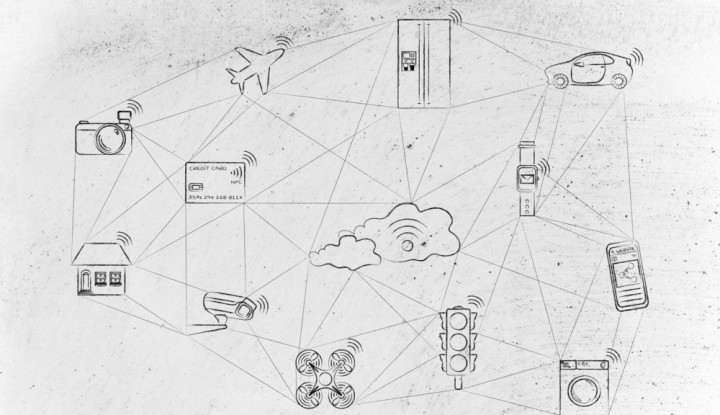This is a viewpoint by Chris Apaliski, Senior Product Marketing Manager for Sabre Dev Studio.
With the advent of the
Internet of Things, we’ve seen major changes in technology. Both mobile and smart devices have been seamlessly integrated into our lives to simplify everyday tasks. In many ways, the future we’ve been predicting came faster than we imagined (minus hoverboards, power laces and flying cars…although we’ve had some variations of that list, which isn’t too shabby). The advances in mobile and voice tech alone are significant and may play one of the biggest roles in dictating where we’re headed.
First we must have an understanding of semantic search, which is more concerned with intent and contextual meaning then keyword-heavy searches. Think of it as a progression from ubiquitous keywords to increasingly important context. Initiatives such as Google’s Knowledge Graph were part of this shift, and ultimately led to one of Google’s most important updates:
Hummingbird. This update leveraged voice search and mobile, and was able to deliver contextually and semantically correct results. Within these changes lie the very basic components of the advances we’re seeing today.
This is so important to both mobile and voice as a whole because it signifies a shift to emerging technology as the new norm. In the past 3 years since Hummingbird, we’ve seen further advancements in mobile usage. This is often coupled by voice search, a natural and intuitive way to obtain results. The quick rate of progress has led to broader adoption. Tools such as Siri, Cortana and Ok Google have become mainstream and devices such as the Amazon Echo evolve consumer expectations about the way we live.
The most notable and interesting aspect of this is how queries become different and now signal intent. That’s exactly how the whole ‘semantic search’ thing helped play a role in this. Yeah…those dudes over at Google are pretty smart!
Into the unknown
Consider that this sort of advancement to the digital age is far from peaking. In fact, it’s just begun. So where does it go from here?
Moving beyond simple voice searches to searching the web on a smartphone, we have begun using voice technology to accomplish tasks and manage business. Working within the travel sphere for instance, we see countless opportunities for transformation.
The comprehensive portfolio of APIs on
Sabre Dev Studio alone opens up a world of possibility. From simple use to combinations for inspirational shopping, ancillary services and more, the APIs provide the framework for the ultimate travel experience. This can span the entire
travel spectrum, from retailers (including travel agencies and startups), to travel suppliers (air, hotel, car and beyond), all within different geographies. All with the potential for global scale.
Recently, at an Expedia Hackathon, the Sabre Labs team integrated Expedia technology into a voice application for the Amazon Echo. Nicknamed “EVA” (Expedia Voice Assistant), the prototype enabled hotel managers to receive hotel and property information just by asking the Amazon Echo questions like “How many rooms do I have booked tonight.”
In addition to this, managers could obtain competitive analysis of their compset to adjust marketing and business initiatives as needed. This is revolutionary for managers: You’re in a meeting or are hard at work and need to look for certain numbers or figures, and they’re all there with one voice command. No logging into dashboards, no searching through spreadsheets. Just the necessary information right when you need it.
Voice and the Internet of Things
There are other ways this could impact travel in the future. For example, consider moving beyond a business-based model and into something customer-centric – such as how the Internet of Things could power an exclusive experience. Imagine yourself taking a trip to Argentina. After deciding you’re ready to book the trip, you use a voice interface to get flight information and book the trip without interrupting the rhythm of your day. Upon confirmation of your best options (sorted by price and travel seasonality), you then make your decision to purchase while in the car.
This next step is where the possibility of the IoT and so many connected devices gets really interesting. The trip will be charged to your linked form of payment and then automatically added to your calendar. All other necessary services could be established – the temperature of your home while you’re gone, home monitoring via smartphone (which you could pull up using voice command), timed sprinkler systems and even notifications to your neighbors of your travel whereabouts in case there are any issues while you’re gone. Once objects begin plugging into a master layer of communication via the Internet, the possibilities are endless.
Keep in mind, this never negates the power of human interaction in travel. But if there are easy ways to sort out the mundane tasks and simplify your daily routine – why not go for it?
These advances in voice, combined with broad inter-connectivity, serve as a counterpart to the analog human experience. We can spend more time on the things that matter thanks to technology, as the most tedious, repetitive tasks are taken care of behind the scenes. And this is only the beginning!
This is a viewpoint by Chris Apaliski, Senior Product Marketing Manager for Sabre Dev Studio.
